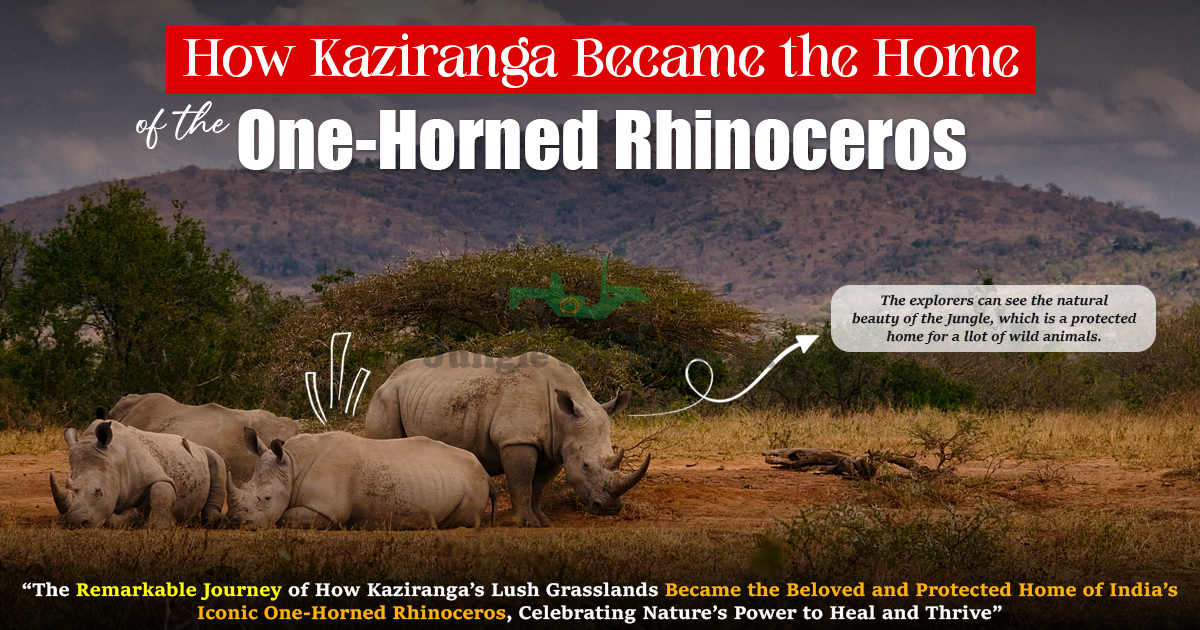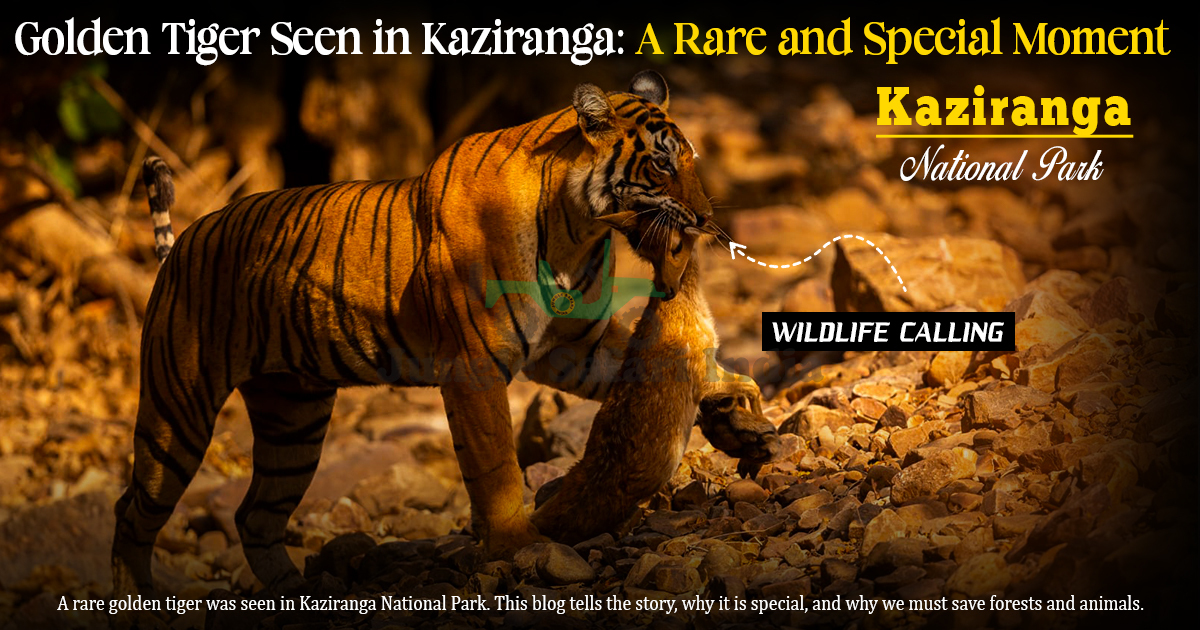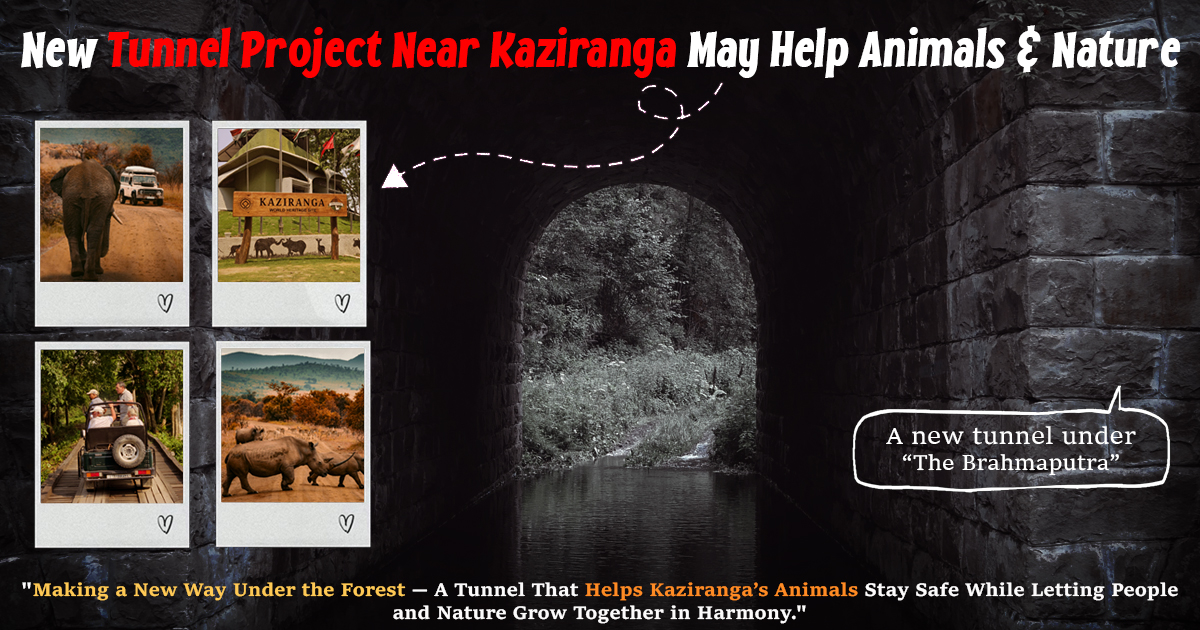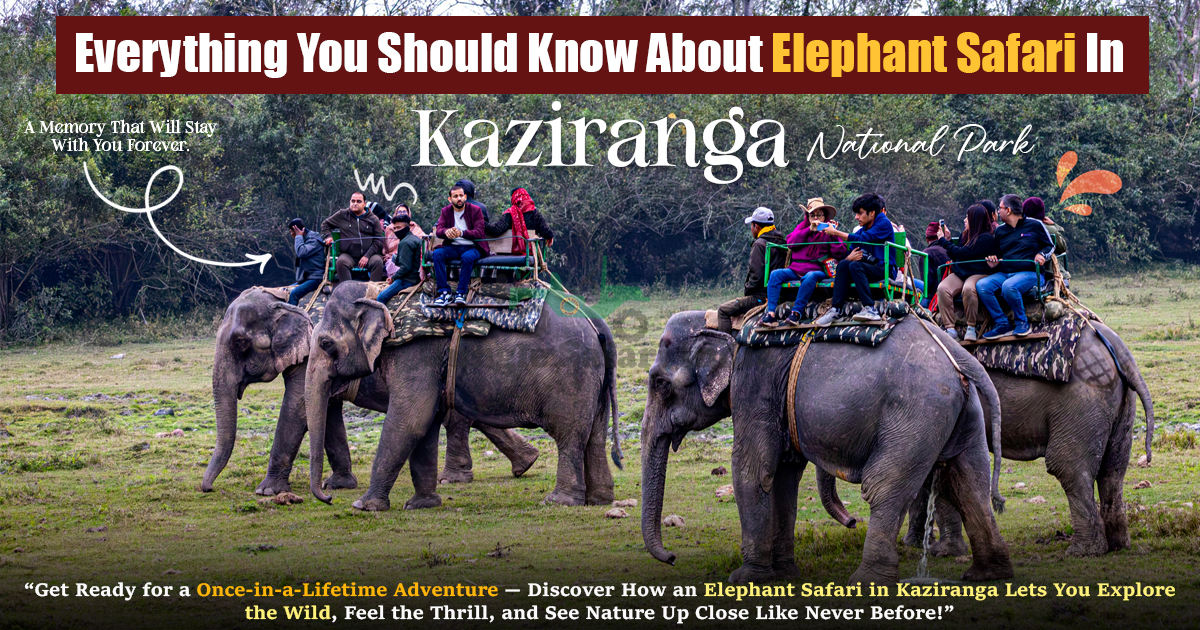Blog Details
How Kaziranga Became the Home of the One-Horned Rhinoceros
- Author : Sanskriti Goyal
- Date : November 13, 2025
Kaziranga National Park
Kaziranga Safari
UNESCO World Heritage Site
Kaziranga is an amazing spot in Assam that attracts a lot of wildlife enthusiasts from different areas of the World. This park has tall elephant grass, misty wetlands, and water bodies, which allow the animals to live in their natural habitat. The main attraction of this park is the Great Indian One-Horned Rhinoceros, also known as the Pride of Assam. Around 2/3rd of the population of the one-horned rhinos call this park home. People can see them by going on thrilling Kaziranga Safari rides.
This park has become a safe spot or home for these animals. Here, the rhinos and other wild animals can live freely without being worried about their safety. This park has even become one of the UNESCO World Heritage Sites because of the population of one-horned rhinos. This park offers an amazing habitat for animals like elephants, tigers, wild water buffalo, and a lot of bird species. Let’s know how this area turned into one of the World’s successful wildlife conservation stories.
When Rhinos Disappeared
A long time ago, in around 1800s, the one-horned Rhinos used to roam freely across the northern areas of India, Nepal, and parts of Myanmar. But people started hunting them, and slowly their population began to decrease. Activities like hunting and poaching took place, and people did it for sport and for the horns of Rhinos. At that time, it was believed that the horns of Rhinos had medicinal properties, because of which people used to hunt them. Also, a lot of humans cut down the trees, which resulted in the loss of habitat for these animals.
Even in the 20th century, people were not sure whether a single rhino was left in Assam. The one-horned Rhinos, who used to roam freely, started decreasing because of poaching and habitat loss. Seeing even one rhino became a rare and special sight. Many people even believed that these species might disappear from these areas forever.
A Woman Who Changed Everything
After their decline, there were a few reports that a few rhinos still survived in this area, but nobody was sure. Then, in 1904, Mary Curzon came to the area of Assam on a visit. She was the wife of Lord Curzon, who was the viceroy of India at that time. She talked with locals and got to know that a strange and huge creature with a single horn is living in the marshlands near a place called Kaziranga.
She became excited to see the creature and wanted to see it for herself. She spent days exploring the wild area of this spot. Even crossed the rivers and moved through the dense thich grass, but she couldn’t see even one Rhino. Then, she was sad because of it and told her husband to do something about this matter. She was concerned that this big creature would disappear forever.
Lord Curzon took her words seriously, and he proposed the area of Kaziranga as a reserved forest in 1905. This way, an area of around 232 km2 became a protected spot for one-horned Rhinos.
The Beginning of Protection
A few protection rules were made at that time, and hunting was completely banned in the area. Even the locals were encouraged to protect wildlife instead of harming it. The area was first made a Reserve Forest in 1908, and then it was upgraded to a wildlife sanctuary. Finally, in the year 1947, the whole protected area officially became Kaziranga National Park.
At first, this area was home to a few dozen rhinos, but this habitat became a perfect home for them. The Brahmaputra River flowed near the park, and the floods from it nourished the land of Kaziranga National Park. The grasses become lush, and they provide enough food for them. Also, the climate kept the rhinos comfortable all year round.
Since the area became a national park, Rhinos lived freely without any human disturbance. Because of this perfect combination of land, water, and food, Kaziranga became the most suitable and safe home for the Great Indian One-Horned Rhino. Over the decades, their numbers began to rise. Slowly, the park became famous across the world as the “Home of the Great Indian One-Horned Rhinoceros.”
Conservation Efforts That Changed Everything
Saving rhinos was not an easy task. Even after protection laws were made, poaching continued for a lot of years. Rhinos were hunted even in their safe home for their horns, and they were sold illegally in international markets for high prices.
But the people of Assam and the forest department did not give up. The forest guards began risking their lives every day to protect the animals. They patrolled the park on foot, on elephants, and even patrolled it with boats during flood times.
Later, the government protected the area with technology. They used drones, camera traps, and GPS tracking for the safety of animals living inside the park. And because of all these efforts, poaching incidents dropped. The population of one-horned Rhions started to rise again.
The government even began rhino relocation programs. In these, the Rhinos were shifted to other parks like Manas and Orang. This made sure that the species spread in different areas and stayed safe from overpopulation risks in a particular area.
The locals who were living near the Kaziranga National Park were educated about the importance of wildlife conservation. Many now work as safari drivers, guides, and eco-tourism partners. They help in protecting the wildlife of the area instead of harming them.
Now, the Kaziranga National Park is home to over 2,400 Rhinos, which is the largest population of one-horned rhinos in the world. And, it has also become a UNESCO World Heritage Site.
Final Thoughts
Now, people can come to the area to enjoy the Kaziranga Safari. Through this, tourists can see the Rhinos and other animals roaming freely in their natural habitat. Each safari ride feels amazing and gives a thrilling chance to spot the different species of animals, birds, etc. It allows the explorers to see the natural beauty of the Jungle, which is a protected home for a lot of wild animals.





(0) Comments: